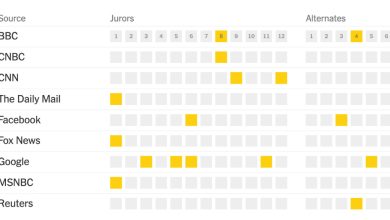New Zealand Elects Its Most Conservative Government in Decades

After an election campaign of fits and starts, in which neither major party appeared to offer much solace to a weary nation, voters in New Zealand on Saturday were projected to oust the party once led by Jacinda Ardern and elect the country’s most right-wing government in a generation, handing victory to a coalition of two conservative parties.
New Zealand’s next prime minister will be Christopher Luxon, a former chief executive of Air New Zealand, whose center-right National Party will lead a coalition with Act, a smaller libertarian party.
The rightward drift ended six years of the Labour government that was dominated by Ms. Ardern, who stepped down early this year.
“She’s probably the most consequential prime minister we’ve had since David Lange,” the Labour leader who came to power in 1984, “and, from an international point of view, most charismatic,” said Bernard Hickey, an economic and political commentator in Auckland, New Zealand. “But this election is the landmark of her failure.”
For many voters, Ms. Ardern and her successor, Chris Hipkins, failed to deliver on the Labour Party’s promise of transformational change. In the weeks leading up to the election, New Zealanders, buffeted by the currents of global inflation and its larger Asia Pacific neighbors’ economic woes, overwhelmingly cited cost of living as the primary concern driving their vote.
The coalition is a return to form for New Zealand, which since moving to a system of proportional representation in 1993 has had only one single-party government — the Labour government elected in 2020 under Ms. Ardern. But it is the first time National has been in coalition with a more conservative partner. The party last governed alone in the early 1980s.
With most of the vote counted, support for the Labour Party, which won 50 percent of the vote in 2020, buoyed by the country’s strong response to the coronavirus pandemic, has collapsed to 26 percent. The National Party had 41 percent, up from 26 percent in 2020.
Among the smaller parties, the Green Party took 10 percent of the vote and Act won 9 percent. New Zealand First, a longtime kingmaker that played a role in Ms. Ardern’s ascent, was not required, as the two governing parties had feared, to push the right-wing coalition over the halfway mark.
The National Party had campaigned on a platform of tax cuts, saying it would offer relief to ordinary families. Critics have questioned the funding for those cuts, which rely heavily on foreign ownership of New Zealand property, and some have said that they disproportionately favor some 300 New Zealand landlords while cutting benefits for disabled people.
Inflation, which was at 6 percent in July compared with 6.7 percent one year earlier, appears to be easing, according to the most recent government data, though New Zealanders will most likely endure pain for some time to come, as the country weathers high house and rent prices, a high cost of borrowing and the effects of global shocks.
“When it comes to the economy,” said Grant Duncan, a political scientist in Auckland, “we’re a cork bobbing around on an ocean.”
The new National-led government, despite being more conservative, was unlikely to make significant changes on many social issues, said Ben Thomas, a former press secretary for the National Party.
“Nobody wants to re-litigate abortion or homosexual marriage,” he said. “Unlike the States, where there’s a constant battle to try and roll back progressive legislation, the conservative tradition in New Zealand is ‘We’ve always gone just about far enough.’”
But Act may seek to push policy priorities of its own, including a referendum to reconsider the role New Zealand’s Indigenous Maori people play in policymaking.
“What they actually want is a referendum which defines away any kind of standing or rights guaranteed to Maori by the Treaty,” Mr. Thomas said, referring to an 1840 agreement that governs New Zealand legislation to this day.
He added: “What you might broadly call racial tensions — over race and policy, Maori policy, Treaty policy — are greater than at any point since 2005.”
At the same time, the country was still contending with a multibillion dollar recovery from Cyclone Gabrielle, which in February devastated swaths of the country’s North Island, exposing dangerous infrastructure fault lines, said Craig Renney, an economist for the New Zealand Council of Trade Unions.
The National Party had not announced any plans for how it would manage New Zealand’s climate vulnerabilities, Mr. Renney said.
“Where are we going to be in six years’ time? What are we going to do to tackle some of the really big issues, be it climate change, renting, employment security?” he said. “Those things haven’t been being debated, because the country is tired.”
It was unclear whether the new government could easily solve these and other problems, said Dr. Duncan, the political scientist.
“I’m not saying they’re going to do a bad job,” he said. “I just don’t have any confidence in them doing a better job.”




